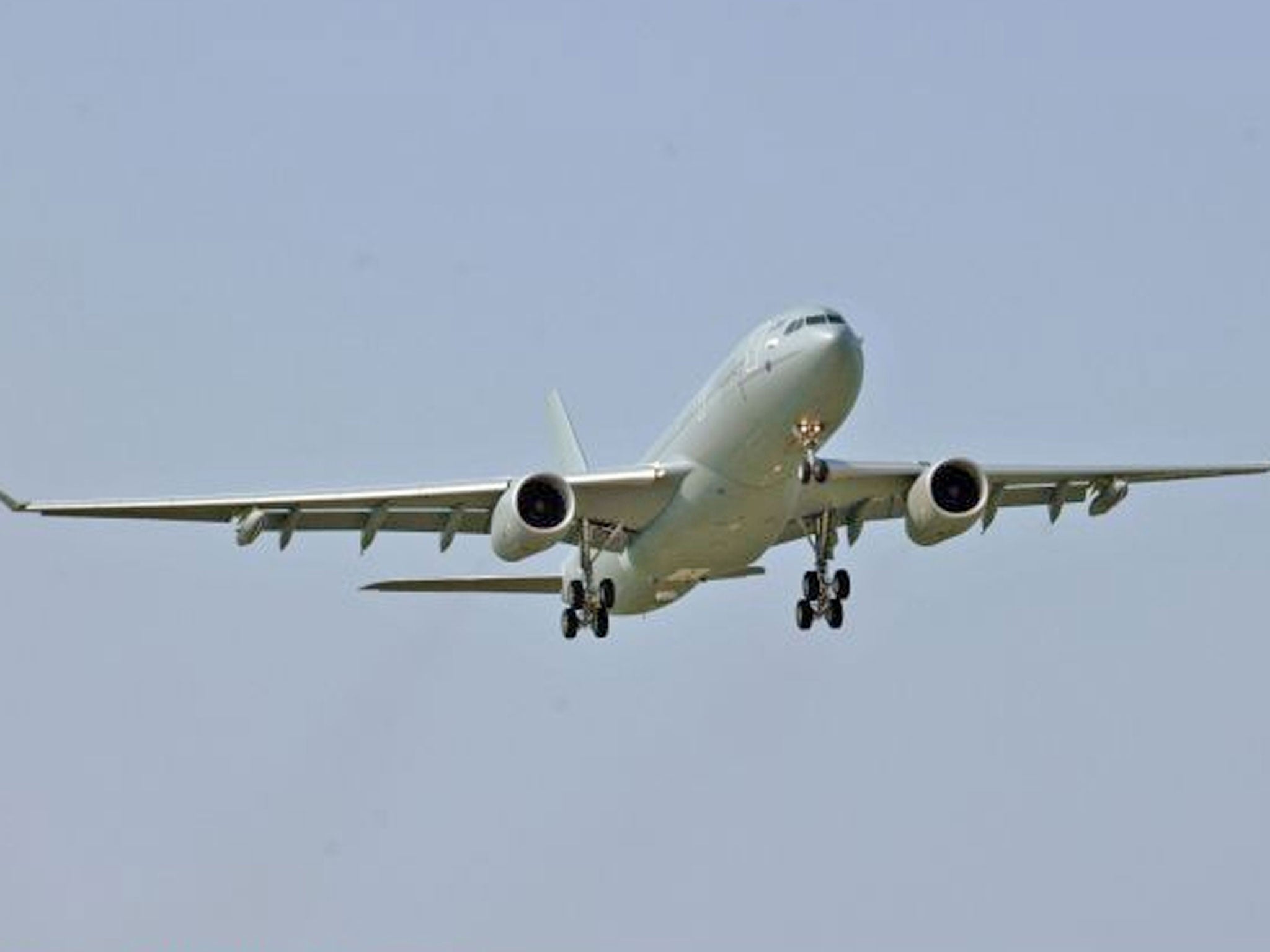Revealed: RAF jet made terrifying 4,400ft plunge after camera became lodged next to joystick

For many on board a plane, it is a natural impulse. The sky is impossibly blue, the view is amazing - so where is the danger in taking a few pictures? The answer, according to the Royal Air Force, is when the camera is in the cockpit with the pilot and it gets ensnared in the flight controls.
The Ministry of Defence yesterday confirmed that one of its new fleet of RAF Voyager transport jets pitched into a terrifying dive, injuring some of the nearly 200 personnel on board, after a camera apparently used to take a few snaps from the flight deck became lodged between the captain’s seat and the joystick used to control the aircraft’s altitude.
The incident in February this year resulted in an 11-day suspension of flights by the RAF’s state-of-the-art fleet of Voyagers, a military version of the Airbus A330 acquired last year by the Ministry of Defence under a controversial £10.5bn Private Finance Initiative deal.
The jet, which was flying with nine crew and 189 servicemen and women from RAF Brize Norton to Camp Bastion in Afghanistan, was some six hours into its journey and cruising on autopilot at 33,000ft when it suddenly pitched into a dive, losing 4,400ft in altitude in 27 seconds as the pilots fought for control.
Such was the steepness and speed of the dive that all on board became momentarily weightless with passengers who were not wearing safety belts being flung against the ceiling of the jet. The MoD said several of those on board suffered minor injuries, understood to be bruising, but none required hospital treatment.
The cause of the incident was initially swathed in mystery. One serviceman who claimed on an Internet forum to have been on the flight said he had been told the dive was caused by a problem with the plane’s autopilot.
But an interim report into the incident released this week by the Military Aviation Authority, which oversees military flights, found that the dive was caused by what it delicately referred to as “human factors”.
It found that a digital SLR camera used minutes earlier to take pictures had become jammed between the armrest of the captain’s chair and the “side-stick” - a control used to adjust the height of the jet. As the seat moved, the camera pushed against the stick and resulted in a “sustained, fully-forward pitch-down command”, investigators found.
At the height of its dive, the aircraft was descending at a rate of 15,000ft per minute.
The report said: “The inquiry has confidence that the pitch-down command was the result of an inadvertent physical input to the captain’s side-stick by means of a physical obstruction [the camera] between the armrest and the side-stick unit.”
Analysis of the camera found it had been used in the three minutes before the dive and had been damaged as it was crushed between the chair and the controls, the report added.
Sources told The Independent it was not yet clear who had been using the camera.
The investigation found that the co-pilot of the plane, part of a fleet of six operated by a private consortium on behalf of the RAF to fly personnel to deployments from Afghanistan to the Falkland Islands, was out of the cockpit and was himself thrown against the cabin roof as the dive took place.
As he re-entered the cabin the co-pilot was confronted with a “disorderly scene with audio alarms sounding and a violent shaking of the aircraft”. Control was regained after the co-pilot reduced the speed of the dive and a “self-protection system” on the jet returned it to normal flight.
The plane was then diverted to the American-run Incirlik airbase in southern Turkey and landed without further incident.
The MoD said yesterday that aircrew were permitted to bring items including cameras into the cockpit and photographs could be taken at appropriate times during a flight.
A spokeswoman added that none of the crew had been suspended or been placed on restricted duties and further action, including any disciplinary hearing, would only follow once the final report by Military Air Accident Investigation Branch is delivered.
In a statement, the MoD said: “We have complete confidence in the safety of Voyager aircraft. Evidence so far makes clear that the incident was not caused by a technical issue. It would be inappropriate to comment further until the Service Inquiry concludes.”
Subscribe to Independent Premium to bookmark this article
Want to bookmark your favourite articles and stories to read or reference later? Start your Independent Premium subscription today.

Join our commenting forum
Join thought-provoking conversations, follow other Independent readers and see their replies